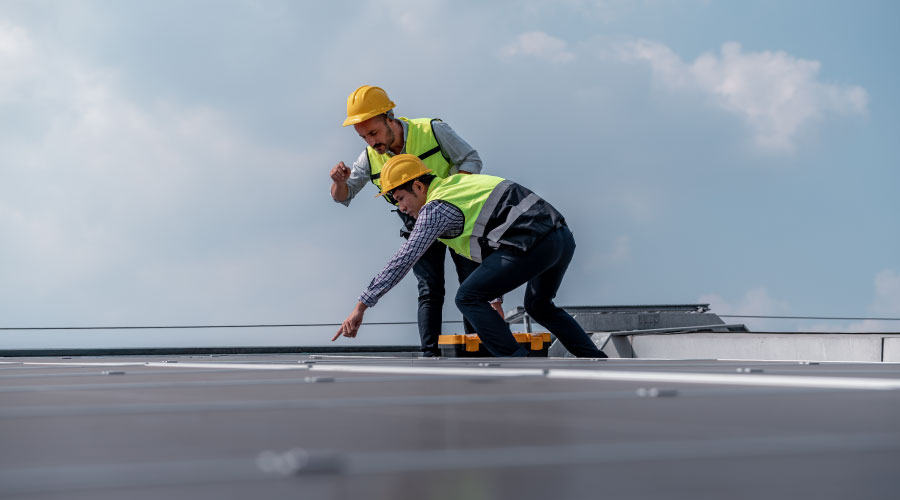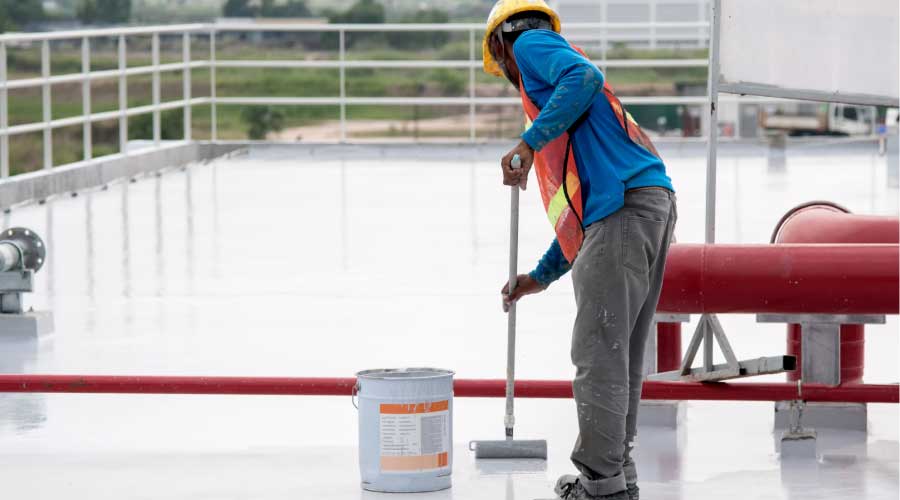Best Practices for Recovering Low-Slope Roofs
Recovering a roof is an ideal solution to get a few more years of life out of an aging roof. But caution and a firm grasp of recover options are required.
An unfortunate truth is that building occupants only seem to appreciate a roof system when something fails. The roof is a burden maintenance and engineering managers must grapple with when the existing roof system is reaching the end of its life span or in the unfortunate occurrence of a leak.
Ideally, building occupants can ignore an appropriately designed, properly installed, and well-maintained roof system, assured that it will perform as needed and keep the building dry.
Recovering a roof is far less labor- and cost-intensive a process than replacing a roof and is a logical point of consideration to start. When evaluating an existing roof system as a candidate for a recover, managers need to review a list of items that includes:
Drainage. Do existing roof drains and roof slopes provide appropriate water drainage? If so, the roof might be a candidate for a recover. If not, and puddles remain on the roof for days, there is no need to continue pondering: Replace the roof. Nothing is more important than getting water off the roof.
Performance to date. If the roof has been leaking for some time, chances are the insulation or structural deck under the membrane is no longer sound. Covering wet insulation or a deteriorated deck might cause the damage to worsen.The best course of action where any roof elements might be in questionable condition is to replace the roofing system.
Existing membrane. How does the existing membrane look? If it seems a little dry, that is fine.
But if it resembles a patched sail flapping in the wind, recovering will not work. An important aspect to recovers is that there will be no warranty for what is being covered. The recover system typically is only warrantied for its own properties and ability to adhere to the substrate. That means that if an old roof membrane with a nice, new recover flies off, that is not a recover product manufacturer issue. It is a building management problem.
Building code. Is a roof recover permitted under the prevailing code requirements? For example, the 2015 International Building Code (IBC) excludes the following conditions from receiving recover systems:
"1. Where the existing roof or roof covering is water soaked or has deteriorated to the point that the existing roof or roof covering is not adequate as a base for additional roofing.
2. Where the existing roof covering is slate, clay, cement, or asbestos-cement tile.
3. Where the existing roof has two or more applications of any type of roof covering.” (IBC 706.3)
The most likely existing roof systems that are candidates for recovers are those that have performed well to date and are approaching the end of their warranty periods. Managers should review a recover as a means to prolong the life of an existing roof membrane for five to ten years, not as the equivalent of a new roof system.
Recover options
Recover options can be categorized by their chemical composition. Acrylic, polyurethane and silicone coatings provide varying degrees of tensile, impact and ponding water resistance, and their costs vary. Additional recover options include polyurethane-methacrylate (PUMA) and polymethyl-methacrylate (PMMA) systems, which are two-component, catalyst-cure membranes that include a fleece reinforcement.
Modified bitumen roof (MBR) membranes can receive liquid-applied systems but are also candidates for installation of new bitumen-based cap sheets. One consideration for MBR systems is whether the existing cap sheet has a granular or smooth surface. A granular surface requires that the existing cap sheet be heated so the granules become embedded within the bitumen before application of a recover product.
A prerequisite for all roof recover options is the ability of the new material to bond to the existing. Manufacturers have acceptable membrane substrates for their products, but, a field test conducted by the manufacturer to confirm project-specific conditions and compatibility is highly recommended.
Related Topics:













